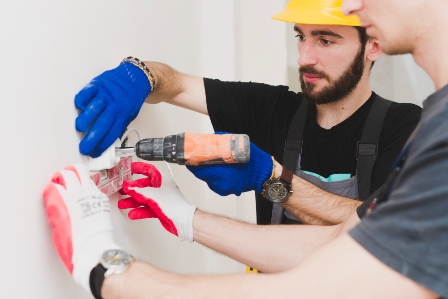A well-maintained home is a happy home. Regular maintenance and timely repairs can prevent minor issues from turning into costly problems. Whether you are a seasoned DIY enthusiast or a beginner, having a basic understanding of home repairs can save time, money, and stress. This guide covers essential tips and techniques for fixing and maintaining various parts of your home, ensuring its longevity and safety.
General Home Maintenance Tips
Before diving into specific repair techniques, here are some essential home maintenance practices that every homeowner should follow:
- Regular Inspections:
Conduct periodic checks on your home’s plumbing, electrical systems, roofing, and structural components to identify potential issues early.
- Keep a Home Repair Toolkit:
Essential tools like a hammer, screwdrivers, pliers, a tape measure, a utility knife, and a power drill can help tackle most repairs.
- Know When to Call a Professional:
While DIY repairs are cost-effective, certain problems such as electrical work, major plumbing repairs, and structural damage require expert assistance.
- Seasonal Maintenance:
Prepare your home for changing seasons by checking insulation, sealing gaps, and servicing HVAC systems.
Common Household Repairs
1. Fixing Leaky Faucets
A dripping faucet can waste water and increase utility bills. To fix it:
- Turn off the water supply.
- Remove the handle and unscrew the cartridge or washer.
- Replace the faulty component and reassemble the faucet.
- Turn the water back on and check for leaks.
2. Unclogging Drains
Blocked drains can lead to water damage and unpleasant odors. Here’s how to clear them:
- Use a plunger to create suction and dislodge the blockage.
- Pour a mixture of baking soda and vinegar down the drain, followed by hot water.
- For stubborn clogs, use a plumber’s snake to remove debris.
3. Patching Holes in Walls
Small holes from nails or accidental damage can be easily patched:
- Clean the hole and remove loose debris.
- Apply spackle or filler with a putty knife and smooth it out.
- Let it dry, sand the area, and repaint if necessary.
4. Repairing a Running Toilet
A constantly running toilet can waste gallons of water. To fix it:
- Open the tank and inspect the flapper, fill valve, and float.
- Adjust or replace the flapper if it’s not sealing properly.
- Adjust the float level to prevent excessive water filling.
5. Sealing Gaps and Cracks
Air leaks around windows and doors can increase energy costs. To seal them:
- Use weatherstripping for doors and windows.
- Apply caulk to cracks around frames and exterior walls.
Electrical Repairs
1. Replacing a Light Fixture
- Turn off the power at the breaker panel.
- Remove the old fixture and disconnect the wires.
- Connect the new fixture following color-coded wiring instructions.
- Secure it in place and turn the power back on.
2. Fixing a Tripped Circuit Breaker
- Locate the breaker panel and identify the tripped switch.
- Reset it by flipping it to the ‘off’ position and then back to ‘on’.
- If the breaker trips frequently, consult an electrician to check for overload issues.
Plumbing Maintenance
1. Preventing Frozen Pipes
- Insulate exposed pipes, especially in colder climates.
- Keep cabinet doors open to allow warm air circulation.
- Let faucets drip slightly during extreme cold to prevent freezing.
2. Stopping a Toilet Overflow
- Remove the tank lid and lift the float to stop water flow.
- Shut off the water supply valve near the toilet.
- Use a plunger to clear any blockages before turning the water back on.
Roof and Exterior Maintenance
1. Fixing Roof Leaks
- Inspect the roof for damaged shingles or flashing.
- Apply roofing sealant to minor leaks.
- For extensive damage, consult a roofing professional.
2. Cleaning Gutters
- Remove leaves and debris from gutters and downspouts.
- Ensure water flows freely to prevent roof and foundation damage.
Home Safety and Fire Prevention
- Check Smoke Detectors: Test batteries monthly and replace them annually.
- Inspect Fire Extinguishers: Ensure they are accessible and fully charged.
- Create an Emergency Plan: Establish escape routes and practice drills with family members.
Conclusion
Regular home maintenance and timely repairs can enhance your home’s safety, efficiency, and longevity. By following these essential tips and knowing when to seek professional help, you can keep your home in excellent condition without unnecessary stress. Whether it’s fixing a leaky faucet, unclogging a drain, or preventing major electrical issues, being proactive with home repairs will always pay off in the long run.


